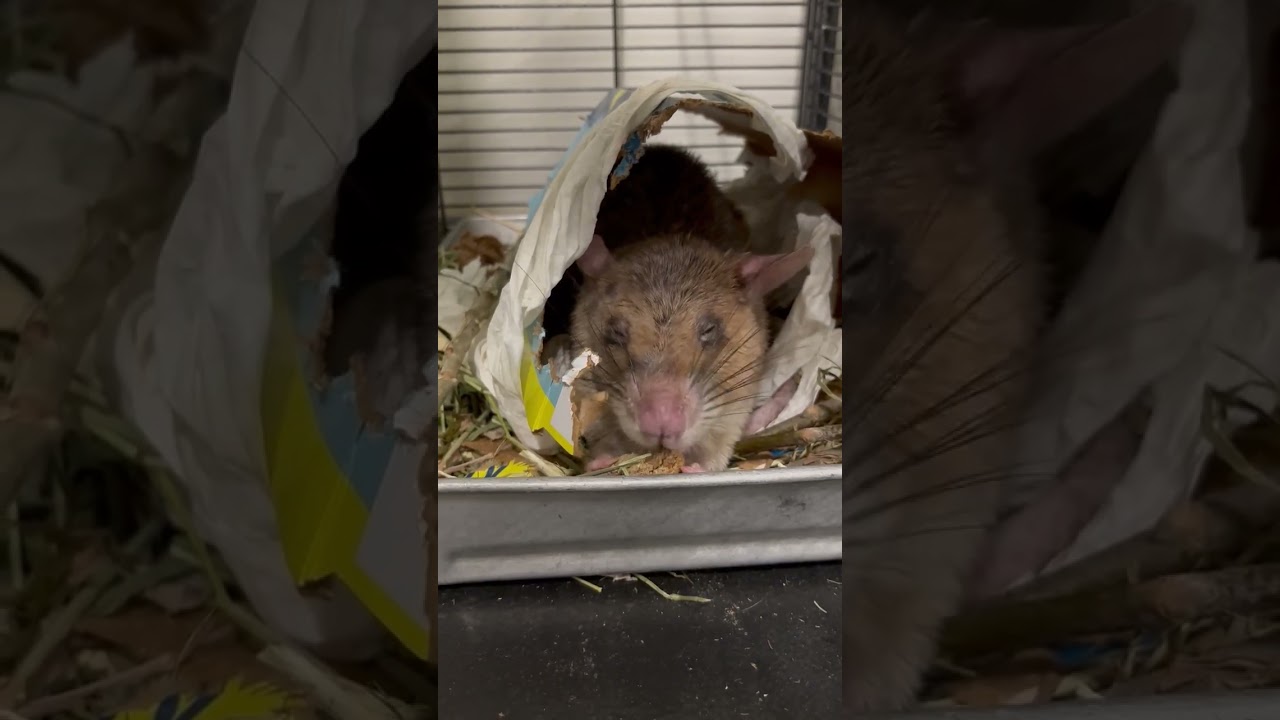– The biology and behavior of the African giant pouched rat, emphasizing its sleeping and eating habits
– The significant role of the African giant pouched rat in scientific research and conservation efforts
– The challenges faced in the conservation of the African giant pouched rat and the strategies implemented to protect them
The African giant pouched rat, with its distinctive size and abilities, attracts the scientific community and wildlife enthusiasts. These nocturnal rodents are known for their ability to sleep throughout the day and exhibit fascinating snack habits, making them a subject of interest for their cute demeanor and ecological and conservation importance.
African giant pouched rats exhibit various behaviors that are intriguing and vital for their survival. Their sleeping patterns are particularly interesting; they are primarily nocturnal, spending most of the daytime sleeping. This aligns with their strategy to avoid predators and conserve energy for their nighttime activities, which include foraging for food. These rodents have a diverse diet, enjoying various snacks, from fruits and vegetables to insects, showcasing their omnivorous nature.
One of the most groundbreaking aspects of the African giant pouched rat’s story is its contribution to scientific research and conservation. Remarkably, these rats have been trained to detect landmines and diagnose tuberculosis, thanks to their acute sense of smell. This not only underlines their intelligence but also highlights their potential to address human challenges while contributing to life-saving solutions. In Tanzania and other parts of Africa, these rats are part of programs to clear landmines and enhance tuberculosis detection rates, showcasing a successful collaboration between animals and humans for societal benefit.
However, the conservation of the African giant pouched rat confronts several hurdles. Habitat loss, largely due to deforestation and human settlement expansion, poses a significant threat to their population. Furthermore, they are sometimes hunted for food or persecuted as pests, contributing to their declining numbers in the wild. Conservation strategies have, therefore, been put in place to protect these valuable creatures. Efforts include habitat restoration, breeding programs, and raising awareness about their importance to biodiversity and human communities.
Protecting the African giant pouched rat is critical for preserving biodiversity and maintaining the ecological balance. They play a key role in seed dispersal and pest control, contributing to the health of their ecosystems. Educating communities on the benefits of these rats and implementing strict anti-poaching laws are essential steps toward their conservation. They are additionally supporting research that explores the full potential of the African giant pouched rat in scientific advancements, further positioning these animals as invaluable participants in global health and safety initiatives.
The African giant pouched rat remarkably demonstrates how wildlife can impact human lives positively and the importance of every species in our ecosystem. We protect these extraordinary creatures and their habitats by understanding their behavior, promoting their conservation, and harnessing their abilities for the greater good. This secures their future, enriches our planet, and advances our scientific endeavors. Engaging with the African giant pouched rat’s story encourages us to appreciate wildlife’s critical role in our world and inspires continued effort toward their conservation and study.
*****
Source Description
Our African giant pouched rat Mona Lisa adorably snoozing and snacking on chow with her arms outstretched. 💤 Keepers provide her with enrichment items like cardboard, straw, and hay that she makes into a cozy bed. 🐀
📹: Keeper Hannah

